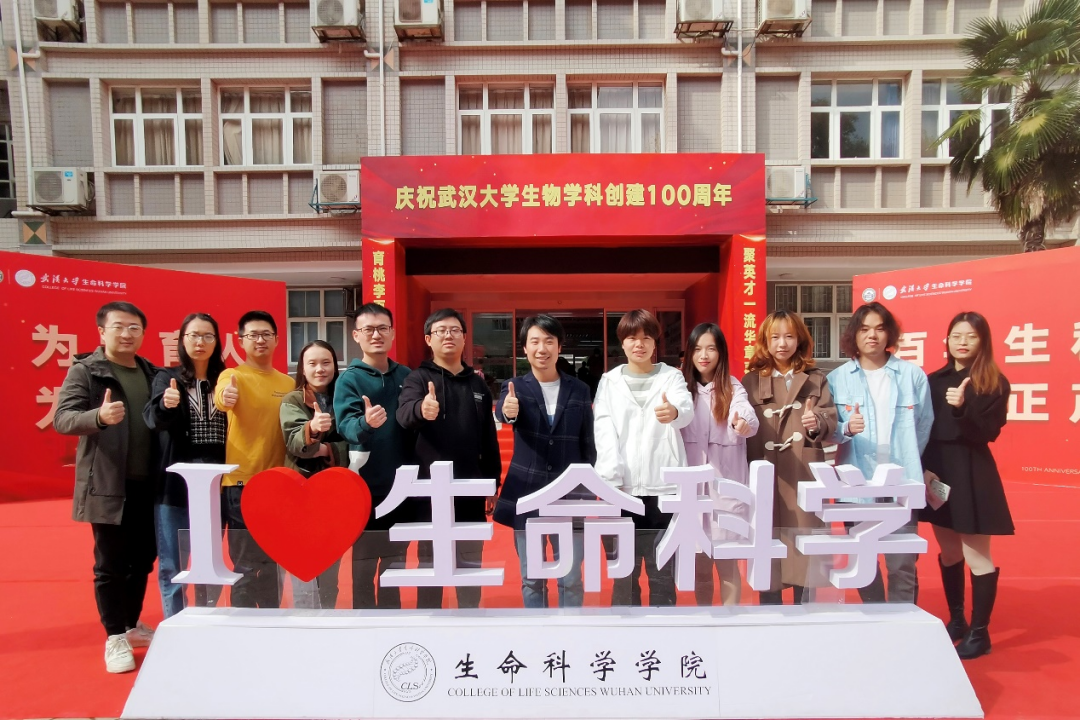(Xinhua, Guozhong) On December 7, the journal Nature published the latest research results of Yan Huan's research group in the field of viral receptors in the National Key Laboratory of Virology, School of Life Sciences in the form of an article entitled "Close relatives of MERS-CoVin bats use ACE2 as their functional receptors" (《MERS冠状病毒在蝙蝠中的近亲病毒使用ACE2作为它们的功能性受体》).

Researcher Yan Huan of the National Key Laboratory of Virology, School of Life Sciences, and Taikang Center of Life Sciences, Wuhan University, and Researcher Wang Xiangxi of the Institute of Biophysics, Chinese Academy of Sciences, and Professor David Veesler of the Department of Biochemistry, University of Washington, USA are the co-corresponding authors of the paper. PhD student Xiong Qing and master’s student Ma Chengbao of the College of Life Sciences, Wuhan University, Associate Researcher Cao Lei of the Institute of Biophysics, Chinese Academy of Sciences, and Dr. M. Alejandra Tortorici, Department of Biochemistry, University of Washington, USA, are the co-first authors of the paper.

Photo of Yan Huan's research group (Yan Huan is the 6th from the right)
NeoCoV was discovered in Cape serotine samples from South Africa in 2012 and is the closest corona virus to MERS-CoV that has been identified in nature. In exploring the functional receptors of multiple representative bat corona viruses, Huan Yan's group found that NeoCoV and PDF-2180, two pseudo viruses of MERS-associated corona viruses, were able to enter cells exogenously expressing the human ACE2 receptor with low efficiency. It is already well known in the field that ACE2 (angiotensin-converting enzyme 2) is the receptor for corona viruses of the Sarbeco virus subgenus, such as NeoCoV SARS-CoV-2. This unexpected result attracted considerable attention of the research group. Using a pseudo virus system, the researchers further tested 46 bat ACE2 receptors and found that both viruses could more efficiently bind the ACE2 receptors of a variety of positive pteropod bats into cells. This result breaks through the current conventional knowledge of corona virus receptors and reveals for the first time that MERS-associated corona viruses can enter cells using ACE2 rather than DPP4 (dipeptidyl peptidase 4, the receptor for corona viruses of the subgenus Merbeco virus such as MERS-CoV).

Kinship, natural host and receptor usage of some representative corona viruses
On this basis, Wang Xiangxi's team at the Institute of Biophysics, Chinese Academy of Sciences has successfully resolved the high-resolution structure of the ACE2 complex with the RBD of the two viral stinging proteins of Pipistrellus pipistrellus by cryo-electron microscopy, and David Veesler's team at the University of Washington has also resolved the high-resolution structure of the PDF-2180 stinging protein full-length trimer by cryo-electron microscopy. The high-resolution structure of the full-length trimer of PDF-2180 spinosin was also resolved by cryo-electron microscopy by David Veesler's team at the University of Washington. Structural analysis revealed that, unlike SARS-CoV, SARS-CoV-2 and NL63, which also use ACE2 receptors, NeoCoV and PDF-2180 recognize ACE2 using a novel binding mode that relies on protein-glycosyl interactions. The footprint of NeoCoV and PDF-2180 was also significantly different compared to the other three viruses, suggesting that the more distantly related corona viruses had convergently evolved to independently select and adapt to ACE2 as a receptor during their evolutionary history.
Subsequently, the researchers further collaborated to explore the molecular mechanisms of receptor recognition by these two viruses and the ability of the associated antibodies to block pseudo virus entry into cells. Sequence analysis and mutation studies revealed that the sequence difference in amino acids 338-342 on the RBD binding blot of human ACE2 relative to that of ambulant bat ACE2 was the key reason for its poor ability to mediate infection, but NeoCoV could achieve efficient recognition of human ACE2 by a single point mutation in T510F on its stinging protein. Antibody neutralization experiments showed that neither serum from NeoCoV vaccine recipients nor monoclonal antibodies targeting MERS-CoVRBD could inhibit NeoCoV and PDF-2180 pseudo virus infection under the current experimental conditions, whereas a specific antibody targeting ACE2 (H11B11) and two broad-spectrum neutralizing antibodies against β genus corona viruses (B6 and S2P6) could effectively block the entry of pseudo viruses of these two viruses into the cells.

Interaction of different corona virus RBDs and their patterns of binding ACE2 (a) and NeoCoVRBD carrying T510F mutation with human ACE2 (b)
In summary, this study reveals that the functional receptor for two bat MERS-associated corona viruses (NeoCoV and PDF-2180) is ACE2, and resolves the structure of the receptor-binding complexes of these two viruses as well as the PDF-2180 stinger protein trimer, suggesting a potential threat to human health from this class of viruses and providing new evidence for the bat origin hypothesis of MERS-CoV. The results of this study will help to further promote the use of ACEs to target human health risk and the basic research on MERS-associated corona viruses using the ACE2 receptor, as well as lay the foundation for the development of related vaccines and antiviral drugs. Finally, it should be noted that all infection experiments in this study involved low-risk pseudo viruses and did not involve real corona viruses or genetic modification of real viruses.
This study was funded by the National Natural Science Foundation of China, the Wuhan University New Corona virus Research Special Fund, the Strategic Key Research Program of the Chinese Academy of Sciences, and the National Key Research and Development Program.
Rewritten by Xuying Cai
Edited by Keke Liang, Sylvia, Xi Bingqing
Link to paper: https://www.nature.com/articles/s41586-022-05513-3